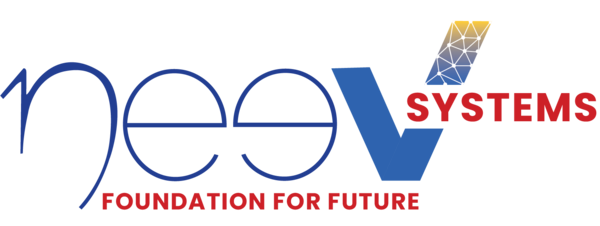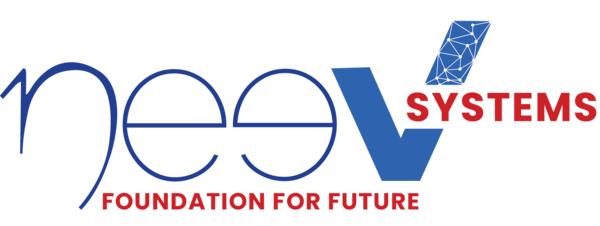In an era where digital transformation is redefining business paradigms and disrupting traditional operational models, the role of technology has never been more pivotal. Gartner forecasts Global IT spending to reach 5.1 trillion in 2024, an increase of 8.8% from 2023. The significant increase in IT spending is driven by investments in cloud computing, Artificial Intelligence (AI), cybersecurity, and many other technology stacks to spur innovation and stay competitive.

Yet, this relentless surge in IT spending poses a complex challenge: How do organizations optimize these colossal investments to ensure that every dollar spent maintains the status quo and propels the business forward?
Failing to optimize IT costs can be perilous. Organizations risk the financial drain and the diversion of critical resources away from innovation, hindering their ability to adapt and evolve in a rapidly shifting landscape. In worst-case scenarios, bloated IT costs can lead to reduced competitiveness and, ultimately, obsolescence.
This blog aims to serve as a comprehensive guide in navigating this intricate terrain. By outlining a strategic roadmap and offering best practices, we delve into the nuances of achieving the equilibrium between financial prudence and technological innovation. You’ll learn how to trim excess and, more importantly, reallocate resources wisely, ensuring your IT infrastructure remains agile, scalable, and aligned with your overarching business objectives.
Importance and Need of IT Cost Optimization

-
- Strategic Business Alignment: In contemporary enterprise settings, IT is not merely a support function but a core enabler of business strategies. IT cost optimization, therefore, plays a crucial role in aligning IT capabilities with strategic business objectives. Effective cost optimization allows organizations to reallocate savings to critical growth initiatives like digital transformation or AI-driven data analytics.
-
- Risk Mitigation: IT cost optimization isn’t solely about budget reduction; it’s intrinsically linked with risk management. For example, optimizing cloud expenditure can mitigate the risk of vendor lock-in by encouraging a multi-cloud strategy, thereby enhancing business resilience.
-
- Enhanced Resource Utilization: With proper cost optimization measures, organizations can improve the efficacy of both human and computational resources. This involves the tactical deployment of staff for high-value tasks and the elimination of redundant computational workloads through infrastructure as code (IaC) and container orchestration platforms.
Challenges IT Leaders Face with IT Cost Optimization
-
- Strategic Cost Visibility: IT leaders often struggle with gaining full visibility into the cost structure. Despite advanced IT Financial Management (ITFM) tools, complex allocations and apportionments can blur financial visibility.
-
- Technological Entropy: The decay in the utility of technological assets over time poses a significant challenge. It necessitates a continual re-evaluation of the tech stack and may result in a costly realignment of IT resources.
-
- Lack of Cloud Cost Oversight: The shift to cloud and as-a-service models, while offering greater flexibility, also brings budgeting and cost management challenges due to a lack of oversight and understanding of the various pricing models.
-
- Governance and Compliance Overheads: Ensuring compliance with regulatory frameworks like GDPR and CCPA requires investments in additional resources and tools, complicating IT cost optimization.
Six Key Strategies To Navigate The Challenges Of IT Cost Optimization
-
- Improved Cost Tracking and Reporting Frameworks for Strategic Cost Visibility
Instead of relying solely on ITFM tools, consider implementing additional cost-tracking and reporting frameworks that fill in the gaps left by traditional ITFM solutions. These frameworks could include custom dashboards, manual oversight, or third-party analytics tools designed to offer the granularity that typical ITFM tools might not provide. This approach is designed to augment existing tools, providing the detailed insight required for strategic decision-making.
-
- Regular Updates and Audits to Counter Technological Entropy
Incorporate regular audits and technology refresh cycles to counteract the decay of asset utility. This process should involve an in-depth examination of your technology stack, aiming to identify redundancies and inefficiencies that can be eliminated or updated, thereby optimizing IT costs.
-
- Implement Cloud Cost Management Tools for Effective Oversight
To address the lack of cloud cost oversight, adopt specialized cloud cost management tools. These tools help track and analyze resource usage in real time, enabling more effective budgeting and cost control. Pair this with strong partnerships with Managed IT Services providers to align pricing models with financial goals.
-
- Centralize Compliance Management
Invest in centralized compliance management systems to offset the challenge of governance and compliance overheads. These systems can automate many compliance tasks like data auditing, risk assessment, and reporting, thus reducing the manual effort and costs associated with maintaining compliance.
-
- Leverage IT Asset Management Software for Resource Optimization
One of the most overlooked aspects of IT cost optimization is asset management. Software solutions that provide a clear view of your IT assets can ensure you only pay for what you genuinely need. By tracking these assets effectively, you can cut unnecessary expenditures and better align your IT budget with your organizational needs.
-
- Outsource IT Tasks
Diverting routine tasks to outsourced services can free up your in-house experts to focus on complex, value-adding projects. Outsourcing not only reduces costs through economies of scale but also elevates your operational efficiency. Depending on your business needs, outsourcing high-skill roles could also bring in value.

Future-Proof Your IT Investments
Strategic Roadmap for IT Cost Optimization and Fuelling Innovation
The journey towards IT cost optimization while simultaneously spurring innovation is a complex undertaking that demands strategic foresight and meticulous planning. Below is a robust roadmap to achieve these dual objectives, ensuring that every dollar spent on your IT infrastructure contributes directly to your business goals.
Step 1: Assess and Benchmark
Understand the current state of your IT infrastructure and how it aligns with your organizational goals.
Action Items:
– Conduct a comprehensive IT audit to evaluate existing hardware, software, and services.
– Benchmark these findings against industry standards and best practices.
Step 2: Identify Immediate Cost-saving Opportunities
Spot quick wins in terms of reducing costs without impairing operational efficiency.
Action Items:
– Eliminate redundancies and unused software or licenses.
– Renegotiate contracts with vendors for better terms.
Step 3: Develop an IT Optimization Strategy
Create a blueprint for optimization, focusing on aligning IT capabilities with business needs.
Action Items:
– Prioritize projects and initiatives that offer the most value.
– Lay out an implementation timeline and assign responsibilities.
Step 4: Invest in Scalable Solutions
Future-proof your IT infrastructure.
Action Items:
– Migrate to cloud solutions where feasible, embracing SaaS, IaaS, or DaaS as required.
– Invest in technologies that can scale with your business needs.
Step 5: Implement Automation and Analytics
Utilize technology to enhance efficiency and gather insights.
Action Items:
– Automate routine tasks such as data backups, system updates, and report generation.
– Implement analytics tools to track performance metrics and identify areas for improvement.
Step 6: Foster a Culture of Innovation
Enable your organization to be agile and innovative.
Action Items:
– Establish cross-functional teams to tackle specific innovation challenges.
– Allocate a portion of the IT budget specifically for innovation projects.
Step 7: Monitor, Measure, and Iterate
Establish an ongoing process for IT cost optimization.
Action Items:
– Regularly review the performance metrics and ROI of implemented strategies.
– Iterate and adapt your IT optimization strategy as needed, accounting for changes in technology and business objectives.
Step 8: Re-assess and Plan for the Future
Prepare for future challenges and opportunities.
Action Items:
– Conduct follow-up assessments to measure the efficacy of your IT optimization initiatives.
– Update the roadmap annually to include new goals, technologies, and business objectives.
By systematically following this roadmap, you’re not merely cutting costs—you’re transforming your IT infrastructure into a strategic asset that advances your organizational goals. Navigating this path can be complex, but it’s crucial for any business looking to thrive in a digital-first world.
FAQs
- 1. What are the cost-effective solutions for data storage and processing?
- 2. How do we assess the total cost of ownership for an integration platform? Provide a comparison of Cloud-based Data Integration Platforms, On-premise Data Integration Platforms, Open-source Data Integration Platforms, Proprietary Data Integration Platforms?
- 3. How can integration efforts contribute to the overall business growth and ROI?
Outsourcing doesn’t just reduce your IT costs; it can be a cornerstone of your overall IT optimization strategy. By allowing specialized service providers to handle specific areas like cybersecurity, you free up internal resources to focus on innovation and core business functions. Such a move not only offers immediate cost benefits but also long-term value.
IT cost optimization is a continuous journey that requires strategic planning, execution, and iterative adjustments. The key is to approach this not as a one-time initiative but as an ongoing process that evolves with your business and technological needs.
Are you ready to embark on a journey toward streamlined efficiency and technological innovation?
Neev Systems is here to guide you through your IT optimization strategy. From conducting assessments to implementing best practices, we offer cost-effective, cutting-edge solutions tailored to your business needs.
Don’t wait; make the first move toward a more efficient and innovative future. Contact Neev Systems for a consultation that could redefine how you think about IT costs and innovation.

Future-Proof Your IT Strategy
Take the first step towards efficient, scalable, and innovative IT solutions today.

Sitaram Pothula
With 22+ years of IT experience, Sitaram combines technical expertise with strategic leadership. He has led engineering teams and delivered solutions across BFSI, telecom, and healthcare. Sitaram excels in aligning technology with business goals to drive innovation and efficiency.


